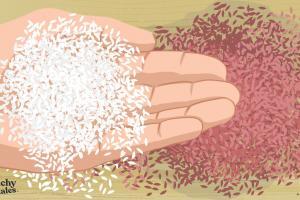How virgin is your Italian Olive Oil?
A principal ingredient in the Mediterranean diet, it is, however, a true elixir of health and beauty. Extra Virgin Olive Oil mainly contains vitamins E, A, K, D, phenol, squalene and sterol, which have antioxidant properties as well as a protective effect on the body’s cells.
Benefits of E.V.O. regular consumption are well known: it contributes to the prevention and treatment of cardiovascular disease, by decreasing the formation of oxygenated free radicals, which have been implicated in heart attacks and cell ageing, and preventing, in part, the development of atherosclerosis and myocardial infarction, in addition to decreasing blood pressure, systolic and diastolic. But when it comes to taste, what makes the Italian extra virgin olive oil stand out from the rest?
The biodiversity of the Italian olives
The country’s greatest advantage on the global market is the biodiversity of the Italian olive heritage. In fact, the uniqueness of Italian olive oil is that each region cultivates olives that are very specific to its territory. There are almost 600 different cultivars (olive varieties), of which at least 300 are in full production, each of them with a unique flavour and characteristics. Notable regional varieties include Nocellara from Sicily, Coratina and Peranzana from Puglia, Moraiolo and Frantoio from Tuscany, and Itrana from Lazio. The climate where the olives grow and the ripeness of the olives at harvest time, the variety of the trees, and the different methods of processing and crushing of the crop, are all elements that characterise and influence the final result of each batch of olive oil.
Due to the natural geography and traditional farming habits, olive groves are cultivated throughout the country, often in canyon-like valleys. This means that harvesting is a difficult and expensive venture, and quantities are small. But unlike other countries such as Spain, Chile or Argentina, the land belongs to independent farmers instead of huge companies. In fact, premium Italian extra virgin olive oil is almost exclusively made by family-owned estate producers who often own their own frantoio (crushing mill) and oversee every step of the process, from tree to bottle. It is up to Italian oil millers to decide whether it is better to enhance each variety’s features in single-cultivar oils or to harmonize them into excellent blends.
How to recognise a good Italian extra virgin Olive Oil
According to Marco Oreggia, the top Italian panel expert and author of “Flos Olei”, the International guide to extra virgin olive oil (it covers 50 countries across the 5 continents):
a good method, especially if you are not an expert, can be to select among extra virgin olive oils that have the so-called Denomination of Origin (PDO) or Protected Geographical Indication (PGI). These labels mean a controlled production chain. Organic Farming and the introduction of new antifraud chemical parameters (the analysis of extra virgin olive oil based on a DNA test) help, too.
It is important also not to be fooled by a cool packaging.
A transparent bottle, for example – said Oreggia- it is not a good choice, because oil is sensitive to light which causes the loss of some valuable elements. Avoid buying a non-filtered oil, too. In fact, the sedimentation, containing in part some water, can induce fermentation and, over time, cause defects like rancidity. Stick to small quantities: as soon as a bottle of oil is opened and exposed to oxygen, it will begin to deteriorate.
Marco Oreggia also recommends that any Italian extra-virgin oil being sold for less than £7 should set alarm bells ringing.
Olive Oil Tasting
Smelling and tasting the oil is also a great way to learn how to identify and recognise a good quality Italian extra virgin olive oil. Professionals usually cup a glass in one hand and cover it with the other to trap the olive oil aromas inside while they warm it up for a minute or two. Then they stick their nose into the glass, take a good whiff of the aroma of the olive oil and breathe out through their nose. This “retronasal” perception will help them experience the flavour notes.
In general, a quality extra-virgin olive oil is slightly green, with a sharp peppery taste at the back of the throat and should have low acidity (under 0.2%). This means it has been produced to the highest standard, and also makes it a much more stable oil, particularly if its vitamin E levels are high. Last but not least, when you want to buy a bottle of Italian extra virgin olive oil, start with freshness. Look for dates on the bottles. Try local producers if you are lucky enough to visit an area where olive oil is made. Learn as much as you can about the grower.
Virgin for a good cause
There are wonderful stories of passion, courage and love for their own land, waiting to be unlocked. One key example is Libera Terra Mediterraneo (Free Mediterranean Land), a no-profit consortium that involves social cooperatives and other operators that share the principles of legality and equity. It manages properties confiscated from the mafia. The flagship product is the PDO Valle del Belice Libera Terra Extra Virgin Olive Oil which is dedicated to Barbara Rizzo, Giuseppe and Salvatore Asta, who were killed by a car bomb intended to assassinate a judge. It is produced with the young plants of Nocellara del Belice that originate in the tuffaceous soil of Castelvetrano, Sicily. The olive groves are all cultivated under dry land conditions and the farming system is clearly organic, according to the basic principles of the project. This outstanding union of ethics and quality transmits the great message that you can reach high quality through an equitable and fair approach while restoring the dignity to formally controlled mafia areas.

